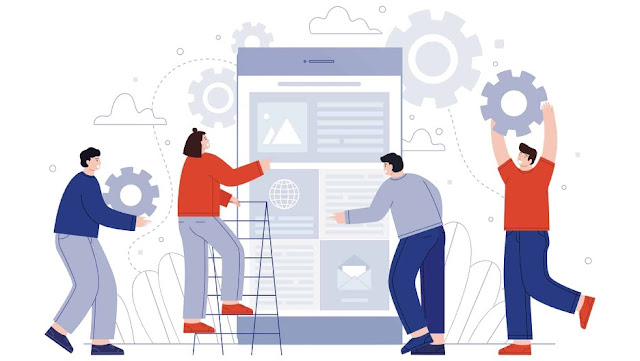SaaS or Software as a service is an application available through a network and works on a subscription or billed as per usage. It is critical that the application is usable and provides an excellent experience for adding new users and retaining the existing ones. We will talk about the most common challenges designers face while designing a SaaS application and the possible solutions.
- User roles and access management
An essential aspect of the B2B SaaS application is that multiple users use it with varying access privileges like admin, manager, associate, etc. New and existing users may find a sudden redesign confusing and not know where to begin.
As a first step, having a landing page that can help explain the different roles and account types is essential. It may have a video or an infographic giving an overview of the application. A redesign may include a guided interface with information segregated into smaller chunks under tabs and menus to help users easily navigate through the application.
- User Dashboards
Designing dashboards can be cumbersome since dashboards for different users with different roles and access privileges can vary significantly. Also, the user needs to find it easy to navigate and understand in the expected time frame.
A streamlined version of the SaaS platform may not always be possible. A designer needs to spend sufficient effort on research to comprehend what users are looking for when using the application. User interviews, surveys, and usability tests are required to better understand the users' requirements and usage patterns for various aspects of the app. I It is essential to understand what can be done to improve the experience.
- Data visualization
Depending on the industry, data visualization may differ in terms of users' expectations or the industry standards; hence a generic visualization may not always be possible. It can lead to problems if users are unaware of all the data visualization changes with the Saas UX Redesign.
A designer should be proactive with communication and the positioning of the message regarding the different changes that may affect users.
- Navigational changes
In case of a redesign, a user, if not aware of the changes to the user interface, may face difficulty navigating through the application, thereby causing a decrease in productivity. If they cannot perform a task in a reasonable time frame, it may lead to engagement fatigue.
This can be minimized by limiting the number of changes per iteration, giving the user time to acclimate. Another critical aspect of a UX redesign should consider the user's behavior pattern through constant feedback. A user should be able to find the information they are looking for in the shortest period.
- Entry and exit points
A platform UX redesign can change entry and exit points and confuse users. They may miss important information when they exit the app and restart, and if they have to renavigate to the earlier point within the platform, it becomes challenging and tedious.
When they get accustomed to an application, most people tend to create mental maps and know where to look for particular information within the app. Instead of renavigating the entire path, they tend to go directly to the destination; hence that becomes their new entry point. The UX redesign should maintain backward compatibility with the product's previous iterations to preserve users' navigation behaviors. They should have the ability to set their entry and exit points.
- Cross-platform compatibility
UX design changes will vary depending on form factor - whether accessed from a desktop or a mobile device, drastically affecting the user's experience. There might be changes in the presentation of information with different platforms, and users may have to search for information several times, leaving a dent in their overall satisfaction with the product.
While redesigning a SaaS app, designers might face numerous issues. The best approach to dealing with these issues is simplifying the design process. Once all stakeholders understand each other's expectations, they can make better decisions that define the best UX for the enterprise-grade Saas solutions.
About author










%20in%20India.png)
